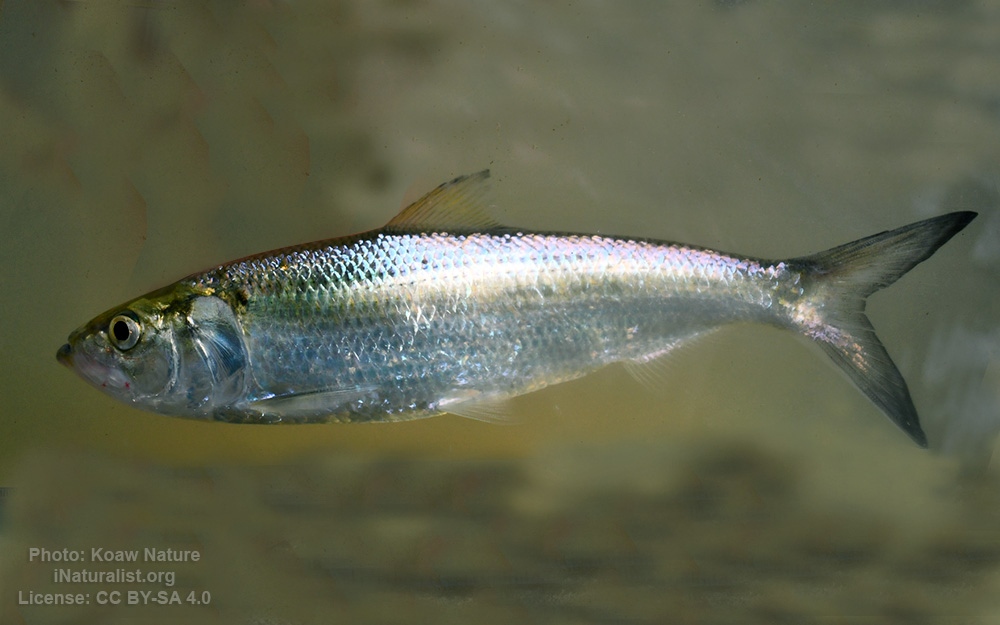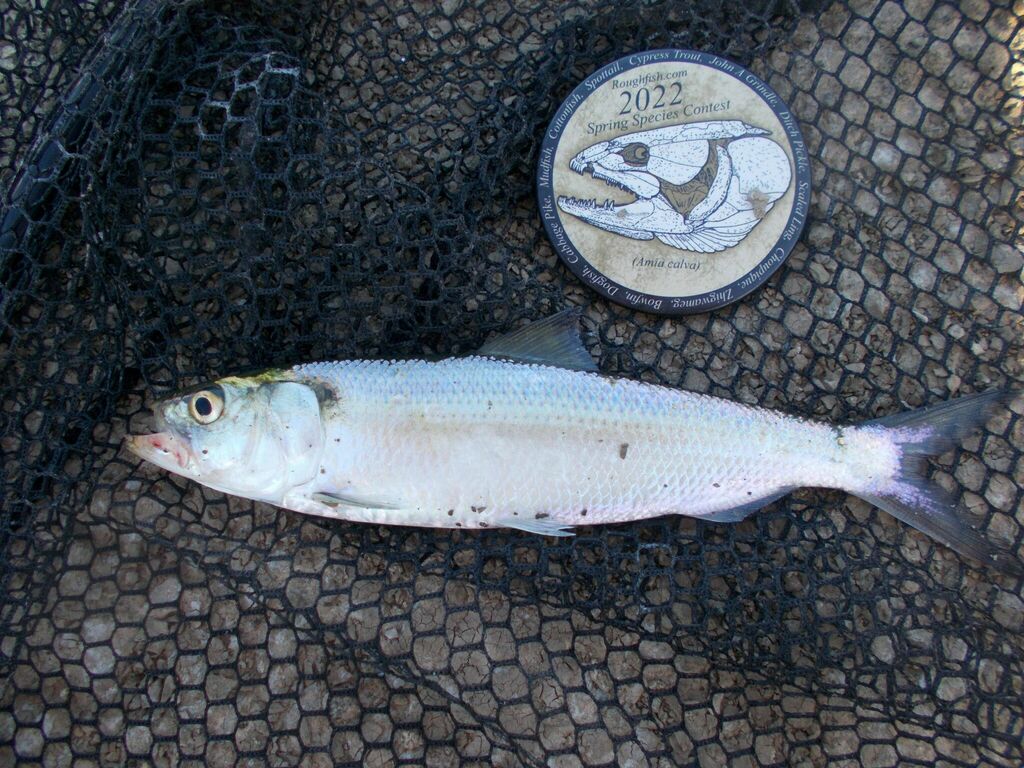Skipjack shad
(Alosa chrysochloris)

Classification
General data
The skipjack herring (Alosa chrysochloris) is a North American, migratory, fresh and brackish water fish species in the herring family Clupeidae.
The name skipjack shad comes from the fact that it is commonly seen leaping out of the water while feeding. Other common names include blue herring, golden shad, river shad, Tennessee tarpon, and McKinley shad.
The skipjack shad is restricted to the Gulf of Mexico drainage basins. Skipjack are found in clear to moderately turbid water in areas with flow. Because they are a migratory species, dams often impede their reproduction. Records suggest that this species was much more abundant in the Upper Mississippi River basin before it was impounded. Currently, skipjack is most abundant in the Upper Mississippi River below the mouth of the Ohio River. They are known as an \\\"early-run\\\" species as they migrate to spawn in the early spring.
Currently skipjack herring are restricted to the Gulf of Mexico and its drainage, in the United States. The Gulf of Mexico drainage includes the Mobile River basin, the ACF basin (Apalachicola/Chattahoochee/Flint River), the Mississippi basin, and the Rio Grande basin.
Skipjack herring are a migratory schooling species. They are a euryhaline species that can enter brackish and freshwater bodies. They can be anadromous but are not obligated to be because they can complete their life cycle in freshwater. Skipjack shad are strongly migratory within rivers and prefer fast flowing water where they are renowned for leaping. They are found in clear to moderately turbid waters in large rivers and reservoirs usually within the current over sand or gravel. In one study, skipjack herring have been found to feed on other shad/herring species such as the threadfin shad, the gizzard shad and young of the year herring species. In some extreme cases, it was shown that they could rely on cannibalism to survive. They are also known to feed on small fishes, mostly shad, while the juveniles feed on insects.
The maximum size of the shad/herring utilized by skipjack shad was found to be about 30-35% of the skipjack’s body length. There is not much data on the predators of the skipjack shad. Larger fish species, seabirds, and humans prey upon them. In fact, it is shown that fish species in the family Clupeidae including the skipjack herring comprise up to 45% of the diet of these avian species.
The maximum length in adults is 20 inches, but they are most commonly found to be between 12 and 18 inches (300–460 mm). The oldest specimen of skipjack herring reported was four years old. High population rates and the fact that there it has little to no interest to fisheries tells us that humans do not have much influence on life history. Impoundments have changed their distribution slightly, but they have no trouble spawning as a result.













